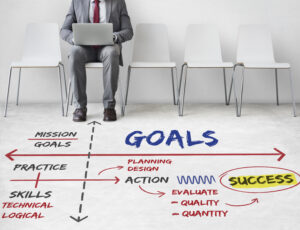Discover the Benefits of Laying Down to Meditate – with Tips
Laying down to meditate, also known as “lying down meditation,” can offer several benefits for practitioners. While the traditional sitting posture is commonly associated with meditation, lying down can be a suitable alternative for those who find it difficult to sit for extended periods or have physical limitations. Here are some benefits of laying down to meditate:
Comfort and Relaxation
Lying down provides a comfortable and relaxed position for meditation. It allows the body to fully rest and release tension, enabling a deeper sense of relaxation during the practice. Individuals with back pain, joint issues, or other physical discomfort may find lying down more accessible than sitting. By removing the strain on specific areas of the body, such as the back or knees, it becomes easier to focus on the meditation itself.
Lying down supports natural breathing and diaphragmatic breathing. With the body in a horizontal position, practitioners can pay closer attention to their breath, experiencing its rhythm and depth more easily. When lying down, one can develop a heightened sense of body awareness. By consciously scanning and relaxing each part of the body, practitioners can cultivate a deep connection with bodily sensations, promoting mindfulness and grounding in the present moment. Some meditation traditions, such as yoga nidra, emphasize the practice of lying down for deep relaxation and restoration. By consciously guiding the flow of energy throughout the body, practitioners can experience rejuvenation and a sense of inner balance.
Lying down can be particularly helpful for guided visualization and imagery exercises. Can you meditate lying down? With closed eyes and a relaxed body, the mind becomes more receptive to visualizations, allowing practitioners to explore their inner world and cultivate positive mental states. Lying down can facilitate the transition into deeper states of meditation, such as relaxation, concentration, and even transcendence. The physical comfort and relaxation provided by the posture can support a more profound sense of inner stillness and tranquility.
Stress Relief
Lying down can aid in stress reduction and relaxation. When the body is fully supported and comfortable, it becomes easier to let go of tension and unwind. This can lead to a decrease in stress levels and promote a greater sense of calm and well-being. Laying down to meditate can also serve as a precursor to sleep or help improve the quality of sleep. By engaging in a meditation practice before bedtime, you can transition into a state of relaxation, quieting the mind and promoting a restful night’s sleep. The lying down position allows practitioners to tune into subtle bodily sensations more readily. This heightened body sensitivity can deepen one’s connection to the physical self, fostering a greater understanding and appreciation of the body-mind connection.
Lying down meditation can support the body’s natural healing processes. By allowing the body to fully relax and enter a state of deep rest, it can recover from physical or mental exertion, promoting overall well-being and rejuvenation. Lying down to meditate can be a more accessible option for individuals with limited mobility or physical conditions that make sitting challenging. It enables a wider range of people to engage in meditation and experience its benefits, regardless of their physical abilities. Lying down provides an opportunity to align the body properly, promoting better posture and spinal alignment. By consciously adjusting the body’s position, practitioners can become more aware of their posture and carry this mindfulness into their everyday life.
Lying down can support the development of equanimity, the ability to remain balanced and non-reactive amidst various stimuli. By observing sensations, thoughts, and emotions while in a relaxed state, practitioners can cultivate a sense of equanimity and carry this practice into their daily interactions. Laying down offers versatility in meditation practices. It can be combined with various techniques such as body scans, loving-kindness meditation, or even guided meditations. This adaptability allows practitioners to explore different approaches and find what resonates best with them.
Lying down can promote mental clarity and focus during meditation. When the body is comfortable and relaxed, it becomes easier to let go of distractions and cultivate a clear and focused mind. This can enhance the quality of your meditation practice. Lying down provides a safe and supportive space for emotional release during meditation. As you relax and let go, suppressed emotions may surface. This posture allows you to observe and process these emotions without judgment, fostering emotional healing and well-being.
Deep Relaxation
Lying down meditation can induce a state of deep relaxation that extends beyond the practice session. This can help reduce overall tension and promote a more relaxed and peaceful state of being throughout the day. The lying down position promotes a sense of unity between the mind and body. By fully surrendering to the support of the surface beneath you, you can cultivate a deeper sense of integration and harmony between your mental and physical states. Lying down can enhance self-awareness during meditation. With the body in a relaxed position, you can more easily observe your thoughts, emotions, and bodily sensations. This heightened self-awareness can lead to a deeper understanding of yourself and your inner experiences.
Lying down can facilitate the flow of subtle energy within the body. By allowing yourself to fully relax, you create space for the movement and balance of energy, fostering a sense of vitality and well-being. Lying down allows for the release of muscular tension that may accumulate throughout the day. This can help alleviate physical discomfort and promote a sense of physical ease and relaxation. Lying down can be particularly beneficial for longer meditation sessions. Compared to sitting, lying down provides a greater level of physical comfort and support, enabling you to sustain your meditation practice for extended periods without discomfort.
Lying down can deepen your connection to the body-mind connection. As you consciously relax each part of your body, you become more attuned to the subtle sensations and signals from within, fostering a greater sense of embodiment. Lying down can serve as a bridge between meditation and sleep. By practicing meditation in a lying position, you can transition seamlessly into sleep, harnessing the benefits of both practices.
Remember, the key to a successful meditation practice lies in finding what works best for you. Whether you choose to sit, stand, or lie down, the important aspect is to create a conducive environment that supports your meditation practice and allows you to cultivate inner peace, clarity, and well-being.
Mastering Time Management for Lighter Burdens – Read this First

Set Clear Goals and Prioritize
Begin by defining your goals, both short-term and long-term. By having a clear vision of what you want to achieve, you can prioritize tasks accordingly. Identify the most important tasks that align with your goals and focus on them first. This will prevent you from getting caught up in unproductive activities and enable you to make significant progress toward your objectives. Time management starts with creating a well-structured schedule. Break your day into manageable chunks and allocate specific time slots for different activities. Be realistic about how long tasks will take and leave some buffer time for unexpected interruptions. Stick to your schedule as much as possible and resist the temptation to deviate from it. Consistency is key to effectively managing your time. Procrastination is the enemy of productivity. Be mindful of your tendency to postpone tasks and develop strategies to overcome them. One effective approach is the “two-minute rule.” If a task takes less than two minutes to complete, do it immediately rather than putting it off. Additionally, break larger tasks into smaller, more manageable parts, and tackle them incrementally. By taking small steps consistently, you’ll make steady progress and avoid the overwhelming feeling of a mountain of work.
Recognize that you don’t have to do everything on your own. Delegate tasks that can be handled by others and outsource activities that are not your expertise. By sharing the workload, you can focus on your core responsibilities and free up time for more important tasks. Trusting others to handle certain aspects not only reduces your burden but also empowers and develops those around you. Many of us find it difficult to say no when others ask for our time or assistance. However, learning to set boundaries and decline requests that don’t align with your priorities is crucial for effective time management. Remember, every time you say yes to something, you’re saying no to something else. Be selective about the commitments you take on and ensure they align with your goals and values.
Take Breaks and Practice Self-Care
Rest and rejuvenation are essential for maintaining productivity and avoiding burnout. Schedule regular breaks throughout the day to recharge your mind and body. Engage in activities that promote relaxation and self-care, such as exercise, meditation, or spending time with loved ones. Taking care of yourself is not a luxury; it is a vital component of effective time management.
Leverage the power of technology and productivity tools to enhance your time management skills. Utilize apps, calendars, and task management software to keep track of your commitments, set reminders, and stay organized. Explore time-tracking tools to gain insights into how you spend your time and identify areas for improvement. Embracing technology can streamline your processes and save you precious minutes or hours each day. Identify and eliminate activities that consume your time without adding value to your life. Common time wasters include excessive social media usage, mindless browsing, and watching too much television. Set boundaries for these activities and allocate specific time slots for them, if necessary. By minimizing time-wasting habits, you’ll create more room for meaningful endeavors and lighten your overall burden.
Your physical environment plays a significant role in your productivity and time management. Organize your workspace to minimize distractions and create a conducive atmosphere for focused work. Keep essential tools and materials easily accessible to save time searching for them. A clutter-free environment promotes clarity of thought and allows you to navigate your tasks efficiently.
Practice the Pomodoro Technique
The Pomodoro Technique is a popular time management method that involves breaking your work into intervals. Set a timer for 25 minutes, called a “Pomodoro,” and work on a task with complete focus until the timer goes off. Then, take a short break for 5 minutes. After completing four Pomodoros, take a longer break of around 15-30 minutes. This technique helps improve concentration, and productivity and prevents burnout.
Time management is a skill that can always be refined and improved upon. Stay open to new strategies, techniques, and tools that can enhance your efficiency. Attend workshops, read books, or listen to podcasts on productivity and time management. Seek feedback from mentors or colleagues who excel in this area. By adopting a growth mindset and being receptive to change, you can continuously evolve your time management practices.
Reflect and Evaluate: Regularly assess your time management habits and evaluate their effectiveness. Reflect on how well you’re utilizing your time and if any adjustments are necessary. Identify areas where you may be struggling or wasting time and brainstorm alternative approaches. Set aside dedicated time each week or month to review and refine your time management strategies. Recognize and celebrate your accomplishments along the way. Acknowledge the progress you’ve made in managing your time effectively and the positive impact it has had on your life. Rewarding yourself for meeting goals or milestones will reinforce your commitment to time management and motivate you to continue on your path of lighter burdens.
Achieving mastery in time management is not an overnight process. It requires a conscious effort to develop new habits and strategies that are sustainable and effective. You must cultivate the discipline to stick to your plan, even when it feels difficult or uncomfortable. However, be compassionate with yourself as you navigate this process and recognize that it’s okay to make mistakes or experience setbacks. With persistence and consistent practice, you will gradually notice positive changes in your life. Your burdens will feel lighter, and you’ll be able to accomplish more tasks with greater ease and efficiency. You’ll also have more time and energy to devote to the things that bring you joy and fulfillment, both personally and professionally. Ultimately, mastering time management is a journey of self-discovery and growth that requires a willingness to learn, adapt, and improve over time.
Cultivating a Growth Mindset for Success – Here’s Why
Unlocking Success
In the pursuit of success, one of the most powerful tools we can possess is a growth mindset. Coined by psychologist Carol Dweck, a growth mindset is the belief that our abilities and intelligence can be developed and improved through dedication, effort, and learning from failures. This mindset not only empowers individuals to embrace challenges and persist in the face of setbacks, but it also enhances their capacity to achieve their goals and reach new heights of success.
Developing a growth mindset begins with recognizing and understanding the difference between a fixed mindset and a growth mindset. In a fixed mindset, individuals believe that their qualities, talents, and intelligence are fixed traits that cannot be changed. This perspective often leads to a fear of failure and a tendency to avoid challenges in order to protect one’s self-image. On the other hand, a growth mindset thrives on the belief that abilities can be developed through dedication and effort. It sees challenges as opportunities for growth and embraces setbacks as stepping stones to improvement.
To cultivate a growth mindset, it is crucial to start by embracing challenges. Rather than shying away from difficult tasks, individuals with a growth mindset actively seek out opportunities that push them outside of their comfort zones. They understand that facing challenges head-on allows them to acquire new skills and knowledge, ultimately leading to personal and professional growth.
Embracing Growth
Equally important is the ability to persist in the face of setbacks. Failure is not viewed as a measure of one’s worth or potential, but rather as a temporary obstacle on the path to success. Those with a growth mindset see setbacks as valuable learning experiences and use them as opportunities to refine their strategies and approaches. By maintaining resilience and perseverance, they continue to move forward, undeterred by temporary failures.
Another vital aspect of cultivating a growth mindset is the willingness to learn from criticism and feedback. Rather than feeling defensive or discouraged, individuals with a growth mindset embrace feedback as a chance to gain valuable insights and improve themselves. They understand that constructive criticism provides an opportunity to refine their skills and expand their knowledge. This openness to learning from others ultimately accelerates their growth and propels them toward success.
Moreover, adopting a growth mindset involves embracing the power of effort and hard work. Instead of relying solely on natural talent or abilities, individuals with a growth mindset understand that sustained effort and deliberate practice are key drivers of success. They invest time and energy into honing their skills, consistently pushing themselves to improve and reach new levels of achievement.
Nurturing Growth
In cultivating a growth mindset, it is crucial to foster a supportive and encouraging environment. Surrounding oneself with like-minded individuals who also value growth and learning can significantly impact one’s mindset. Engaging in collaborative endeavors, seeking mentors, and participating in communities that promote growth can provide invaluable support and inspiration on the journey to success.
A growth mindset also fosters a sense of resilience and adaptability. In today’s fast-paced and ever-changing world, the ability to adapt to new circumstances and embrace change is crucial for success. Individuals with a growth mindset view challenges and changes as opportunities for growth and innovation. They are not afraid to step out of their comfort zones and explore new territories, knowing that it is through these experiences that they will continue to learn and evolve.
Furthermore, a growth mindset promotes a love for lifelong learning. It instills curiosity and a thirst for knowledge that goes beyond formal education. Individuals with a growth mindset actively seek out new information, continuously expand their skill sets, and stay up to date with the latest advancements in their field. They understand that learning is a never-ending process and that by continuously acquiring new knowledge, they can remain at the forefront of their industry.
The Power of a Growth Mindset
The benefits of cultivating a growth mindset extend beyond individual success. In educational settings and workplaces, fostering a growth mindset culture can lead to improved collaboration, creativity, and problem-solving. When individuals believe in their ability to learn and grow, they are more likely to embrace teamwork, share ideas, and support each other’s development. This collaborative and supportive environment cultivates innovation and empowers everyone to contribute their unique talents and perspectives.
It is important to note that cultivating a growth mindset requires consistent effort and self-reflection. Breaking free from ingrained patterns of thinking and embracing a growth-oriented perspective may not come naturally to everyone. However, with practice, patience, and a commitment to personal growth, anyone can develop and strengthen their growth mindset.
In addition to the personal benefits, a growth mindset also contributes to a positive and fulfilling mindset. By focusing on growth and improvement rather than fixating on outcomes, individuals with a growth mindset find joy and satisfaction in the process itself. They derive a sense of fulfillment from the progress they make, the skills they develop, and the knowledge they acquire. This intrinsic motivation fuels their drive to continue growing and achieving even greater success.

Cultivating a growth mindset also inspires others and creates a ripple effect of positive change. When individuals demonstrate their belief in the power of growth and improvement, they inspire those around them to adopt a similar mindset. By sharing their experiences, encouraging others to embrace challenges, and celebrating the achievements of their peers, they foster a culture of growth and development. This collective mindset shift can have transformative effects on entire organizations, communities, and even society as a whole.
Unleash Potential Success
It is important to remember that developing a growth mindset is a continuous journey. It requires self-awareness, self-reflection, and a willingness to challenge one’s own beliefs and limitations. Overcoming self-doubt and negative thought patterns may take time and effort, but the rewards are well worth it. As individuals embrace a growth mindset, they unlock their true potential and pave the way for ongoing personal and professional success.
To further cultivate a growth mindset, it is beneficial to develop certain habits and strategies. One effective approach is to set specific and achievable goals. By setting clear goals, individuals provide themselves with a sense of direction and purpose. These goals can be broken down into smaller, manageable steps, allowing for progress to be measured and celebrated along the way. Each achievement serves as evidence of growth and reinforces the belief in one’s ability to continually improve.
Another helpful strategy is to embrace the power of positive self-talk and affirmations. The way we speak to ourselves has a significant impact on our mindset and overall well-being. By replacing negative or self-limiting thoughts with positive and empowering statements, individuals can rewire their thinking patterns and bolster their belief in their own potential. Affirmations such as “I am capable of overcoming challenges” or “I embrace learning and growth” can reinforce a growth mindset and cultivate a positive outlook.
Additionally, seeking out learning opportunities and diversifying one’s experiences can fuel growth. This can involve taking up new hobbies, attending workshops or seminars, pursuing further education, or engaging in professional development activities. By actively seeking new knowledge and experiences, individuals expand their skill sets, broaden their perspectives, and develop a growth-oriented mindset.
It is equally important to maintain a healthy attitude toward failure. Rather than viewing failure as a reflection of personal inadequacy, individuals with a growth mindset see it as an opportunity for learning and improvement. Embracing a “fail forward” mentality allows individuals to extract valuable lessons from their failures, adjust their approach, and continue progressing towards their goals with newfound wisdom and resilience.
Lastly, cultivating a growth mindset requires patience and perseverance. It is essential to recognize that personal growth and success do not happen overnight. It takes time, effort, and dedication to develop new skills, overcome challenges, and achieve desired outcomes. Embracing the journey and enjoying the process of continuous growth allows individuals to stay motivated and resilient in the face of obstacles.
In summary, cultivating a growth mindset requires the following key elements:
 Setting specific goals:
Setting specific goals:
By setting clear and well-defined goals, individuals provide themselves with a sense of purpose and direction. These goals act as guiding beacons, helping individuals to focus their efforts and measure their progress. Specific goals enable individuals to break down their aspirations into smaller, actionable steps, making them more achievable and manageable. Regularly reviewing and adjusting these goals ensures continuous growth and development.
Embracing positive self-talk:
The way we talk to ourselves has a profound impact on our mindset and overall well-being. Embracing positive self-talk involves consciously replacing self-limiting thoughts and negative inner dialogue with empowering and optimistic statements. By cultivating a positive mindset and reinforcing beliefs in their abilities, individuals strengthen their resilience and motivation. Positive self-talk acts as a powerful tool to counter self-doubt and foster a growth-oriented mindset.
Seeking out learning opportunities:
Continuous learning and self-improvement are fundamental aspects of cultivating a growth mindset. Actively seeking out learning opportunities expands knowledge, enhances skills, and broadens perspectives. This can involve attending workshops, seminars, or conferences, pursuing further education, reading books, or engaging in online courses. Embracing a mindset of lifelong learning opens doors to new possibilities, nurtures curiosity, and keeps individuals adaptable in an ever-changing world.
Reframing failure:
Rather than viewing failure as a measure of personal worth or ability, individuals with a growth mindset see it as a stepping stone on the path to success. Reframing failure involves extracting valuable lessons, embracing resilience, and using setbacks as opportunities for learning and growth. By shifting the perspective from failure as a negative outcome to failure as a valuable feedback mechanism, individuals can bounce back stronger, adjust their strategies, and continue progressing toward their goals.
Maintaining patience and perseverance:
Developing a growth mindset is a journey that requires patience and perseverance. It is essential to recognize that personal growth and success do not happen overnight. Embracing the process, maintaining a long-term perspective, and staying committed to continuous improvement is crucial. Challenges and obstacles will arise, but with patience and perseverance, individuals can overcome them and continue their growth journey.
By adopting these habits and strategies, individuals can foster a growth mindset that fuels their personal and professional development. With a growth mindset, individuals are equipped to navigate challenges with resilience, embrace opportunities for learning and growth, and ultimately achieve greater success and fulfillment in their lives.
Understanding the Link Between Childhood Trauma and Attracting Narcissists – Here’s Why
The Intricate Link
Childhood experiences play a crucial role in shaping our personalities and relationships in adulthood. While some individuals are fortunate enough to have nurturing and supportive childhoods, others may endure various forms of trauma that can have lasting effects on their psychological well-being. One significant consequence of childhood trauma is the potential to attract narcissistic individuals into their lives. In this article, we will explore the connection between childhood trauma and the attraction to narcissists, shedding light on the underlying dynamics and providing insights into the healing process.
Narcissistic personality disorder (NPD) is characterized by an excessive need for admiration, a grandiose sense of self-importance, and a lack of empathy for others. Narcissists often seek out individuals who can provide them with the attention and admiration they crave. It is not uncommon for individuals who have experienced childhood trauma to become targets for narcissists. Understanding why this occurs requires examining the impact of trauma on one’s self-esteem and relational patterns.
Childhood trauma, such as physical or emotional abuse, neglect, or abandonment, can profoundly affect an individual’s self-worth and sense of identity. Traumatic experiences can shatter one’s belief in their own value and disrupt their ability to establish healthy boundaries. As a result, survivors of childhood trauma may develop a deep-seated need for validation and affirmation from others.
The Allure of Narcissists
Narcissists possess a keen ability to sense vulnerability and exploit it for their own gain. They often present themselves as charismatic and charming individuals who shower their targets with attention and affection. For someone who has experienced childhood trauma and lacks a solid foundation of self-worth, the initial attention and flattery from a narcissist can be intoxicating. It offers a temporary respite from the deep-seated wounds they carry.
Furthermore, narcissists are skilled manipulators who excel at gaslighting and emotional manipulation. They can make their victims question their own perceptions and reality, which can be particularly triggering for individuals with a history of childhood trauma. The gaslighting tactics employed by narcissists may inadvertently reinforce the survivor’s belief that they are unworthy or deserving of mistreatment, perpetuating a harmful cycle.
It is important to note that the attraction to narcissists is not a conscious choice but a manifestation of unresolved psychological issues stemming from childhood trauma. The unconscious desire for validation and the hope of healing past wounds can blind survivors to the red flags and toxic behaviors displayed by narcissistic individuals.
Breaking Free from Narcissists
You may be wondering why do I attract narcissists? Breaking free from the cycle of attracting narcissists requires a comprehensive healing process. Therapy, particularly trauma-focused therapy, can be instrumental in helping survivors address and heal from the wounds of their past. Therapists can assist individuals in rebuilding their self-esteem, establishing healthy boundaries, and recognizing the patterns that contribute to attracting toxic relationships.
In addition to therapy, engaging in self-care practices, such as mindfulness, journaling, and self-reflection, can aid in the recovery process. Developing a strong support system of trusted friends and loved ones who provide empathy and validation can also be invaluable.
It is essential for survivors of childhood trauma to remember that their worth and value as individuals are not defined by the opinions or treatment of narcissists. Healing takes time and patience, but with the right support and resources, survivors can break free from the cycle and cultivate healthier, more fulfilling relationships.
As survivors of childhood trauma progress on their healing journey, it becomes crucial to develop a deeper understanding of healthy relationship dynamics. This involves learning to identify red flags and setting firm boundaries to protect oneself from future encounters with narcissistic individuals.
Breaking the Cycle
Education about narcissism and its manipulative tactics can also be helpful in empowering survivors to recognize the warning signs early on. By familiarizing themselves with the traits and behaviors associated with narcissistic personality disorder, survivors can better equip themselves to avoid falling into the same patterns in the future.
Building self-esteem and self-love are foundational aspects of healing from childhood trauma and breaking free from the cycle of attracting narcissists. Engaging in activities that promote self-growth and self-compassion, such as practicing self-care, pursuing hobbies and interests, and celebrating personal achievements, can gradually rebuild a survivor’s sense of self-worth.
Support groups and online communities specifically tailored to survivors of childhood trauma can provide invaluable support and validation. Connecting with others who have had similar experiences can create a sense of belonging and help survivors realize that they are not alone in their struggles. Sharing stories, insights, and coping strategies can contribute to the healing process and serve as a reminder that there is hope for a brighter future.
It is also important for society as a whole to recognize the impact of childhood trauma and the vulnerabilities it can create. By fostering an environment that promotes empathy, understanding, and early intervention, we can work towards breaking the cycle of trauma and reducing the likelihood of attracting narcissistic individuals.
To further understand the link between childhood trauma and attracting narcissists, it is essential to explore the underlying psychological mechanisms at play. Childhood trauma can profoundly impact the development of core beliefs and attachment styles in individuals.
The Impact of Childhood Trauma
When children experience trauma, such as abuse, neglect, or abandonment, it disrupts their sense of safety, trust, and emotional well-being. These adverse experiences can shape their beliefs about themselves and the world around them. They may internalize the trauma, blaming themselves and developing a deep-seated belief that they are unworthy of love and affection.
These distorted beliefs can lead survivors of childhood trauma to seek validation and approval from external sources, including narcissistic individuals. The manipulative tactics employed by narcissists, such as love-bombing and idealization in the early stages of a relationship, can reinforce the survivor’s desperate longing for validation. The survivor may interpret these behaviors as proof that they are finally valued and loved.
Additionally, survivors of childhood trauma may struggle with setting and maintaining healthy boundaries. Due to the violation of boundaries experienced during their formative years, they may not have developed a clear understanding of what constitutes healthy boundaries in relationships. This lack of boundary awareness can make them more susceptible to manipulation and control by narcissists, who often exploit and disrespect boundaries.
Furthermore, unresolved emotional wounds from childhood trauma can make survivors more prone to reenacting familiar patterns in their adult relationships. The dynamics of power and control that narcissists often establish can unconsciously resonate with the power imbalances and control they experienced during their traumatic upbringing. As a result, survivors may find themselves caught in a cycle of attracting and being attracted to narcissistic individuals.
Healing from Childhood Trauma
Breaking free from this cycle requires a comprehensive healing process that addresses both the psychological and emotional impact of childhood trauma. Therapy, particularly modalities that focus on trauma resolution, can be instrumental in helping survivors develop healthier relationship patterns. Therapists can guide individuals in exploring and processing their traumatic experiences, challenging distorted beliefs, and fostering self-compassion.
In addition to therapy, self-care practices that promote self-love and self-esteem are essential. Engaging in activities that nourish the mind, body, and soul can help survivors reconnect with their inherent worth and develop a stronger sense of self. This might include practicing mindfulness and meditation, engaging in creative outlets, pursuing hobbies, or participating in physical exercise.
Support systems are also crucial for survivors of childhood trauma. Surrounding oneself with trusted friends, family members, or support groups can provide validation, empathy, and a safe space to share experiences and challenges. Building healthy connections and receiving support from individuals who prioritize mutual respect and understanding can contribute significantly to the healing process.
It is important to remember that the attraction to narcissists is not a flaw or weakness in the survivor but rather a reflection of their unresolved trauma. With patience, self-compassion, and the right support, survivors can break free from the cycle of attracting narcissists and cultivate relationships that are built on respect, trust, and genuine love.
Raising Awareness
It is important to raise awareness about the link between childhood trauma and attracting narcissists, as it can help both survivors and society at large to recognize the underlying dynamics and take proactive steps towards healing and prevention.
Education and public discourse surrounding narcissism and its effects are crucial in empowering survivors and fostering understanding among the general population. By increasing awareness of the red flags and manipulative tactics employed by narcissists, individuals can be better equipped to identify and protect themselves from potentially harmful relationships.
Efforts should be made to integrate education about childhood trauma and its long-term impact into schools, mental health programs, and community initiatives. Providing resources and support for survivors to access trauma-informed therapy and counseling can also make a significant difference in their healing journey.
Furthermore, societal attitudes and norms need to shift to create a culture of empathy, compassion, and respect. By challenging societal messages that perpetuate harmful stereotypes, victim-blaming, and stigmatization, we can create an environment where survivors feel safe to seek help and support without fear of judgment.
Preventive measures are equally important in breaking the cycle. Early intervention programs that address childhood trauma and provide support to children and families at risk can help mitigate the long-term effects and reduce the likelihood of attracting narcissists later in life. Creating safe spaces for children to express their emotions, providing access to mental health resources, and promoting healthy attachment styles can all contribute to healthier outcomes.
In conclusion, the link between childhood trauma and attracting narcissists is a complex interplay of psychological, emotional, and relational factors. Survivors of childhood trauma may unconsciously seek validation and repeat familiar patterns through relationships with narcissistic individuals. However, through therapy, self-care, boundary-setting, and supportive connections, survivors can heal, reclaim their self-worth, and cultivate healthier relationships that are free from the detrimental influence of narcissism.
San Diego California Senior Living Options
Senior Living: Now Easy to Choose
Children of aging parents usually find it difficult to convince them to move to a senior living San Diego facility when the circumstances demand so. For elderly parents that have been living in their residences for a lengthy time, it becomes complicated to even assume of leaving and moving to senior homes. With changed well being and housing requirements, the aging parents can look at moving to a senior apartment which presents a number of facilities at an affordable cost. With the rising trend of aging parents living in senior facilities, the senior living selections have been simplified to ensure that the selection becomes simpler. One can pick from independent living, senior assisted living, retirement residences or nursing properties as per the senior’s requirements and price range. One of the most critical consideration when choosing a Memory Care would be the place, since inside the case of independent living, the elderly person could need to have access to health-related clinics, hospitals and other healthcare facilities. It really is advisable for the senior citizens to begin the search with this in thoughts.

Senior Residences Becomes Much Easier
When the senior citizens have a fantastic understanding of their private demands and living criteria, then the selection of the senior residences becomes much easier. Numerous options are available in recent times that the elderly individual can choose based on his/her needs at affordable prices. Senior living facilities provide 24 hour service in an effort to suit the needs of each and every person. Senior assisted living is a superior choice for those that are physically unhealthy and seek the support of other folks in performing crucial every day tasks. When picking an assisted living option, it is important to take into consideration how cooperative and polite the employees is in these senior houses. For aging parents who reside far from their families, and are in need to have of specialized care, a senior apartment is definitely a superb alternative. Websites like www.homeinstead.com help you find the right care in your neighborhood.
The philosophy behind these senior living possibilities is always to give freedom and dignity to the senior citizens in poor physical overall health. For children who need to send their aging parents to senior homes, it is actually now easier to opt for a facility within the most cost-effective manner. Typically, senior assisted living is regarded the best solution due to the fact these facilities give a secure living environment – a priority for most seniors. On the other hand, a senior apartment can present seniors far more personal freedom, inside a neighborhood of their peers.







 Setting specific goals:
Setting specific goals:



